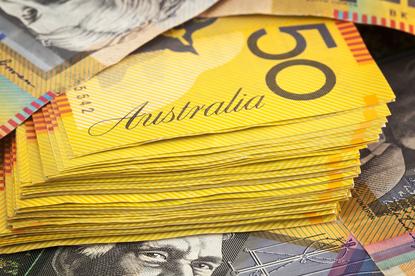NBN Co revises revenue projections, cost of completing rollout
- 31 August, 2018 10:40

NBN Co is now projecting revenue of $3.9 billion in FY20, down $1 billion from its previous forecasts.
The government-owned company today released an update of its corporate plan which covers the period 2019-2022, revealing that it expected peak funding for the new network to be $51 billion — within the range forecast in its previous plan but still $2 billion higher than expected.
NBN Co said that it would seek the additional $2 billion from private sector debt. The revised peak funding projection follows a government decision in late 2016 to loan NBN Co $19.5 billion to make up a shortfall between Canberra’s equity contribution and the cost of the rollout.
NBN Co argues that the changes in its forecasts are a result of its focus on improving customer experience.
The impact on peak funding came from three sources, NBN Co said: The company’s changes to wholesale pricing to reduce congestion will have an $700 million impact on revenue, the work on optimising the hybrid-fixe coaxial (HFC) network (a $700 million revenue impact from the pause in HFC sales and $200 million spent on improving the network), and $800 million on improving the capacity of the company’s fixed wireless network.
NBN Co in August revealed that it had hit its FY18 revenue target, despite falling short of its activation target thanks to the HFC pause.
The company is now projecting lower than previously expected revenue for FY19 and FY20. By FY21 the gap between the previous and current forecasts will have narrowed with NBN Co expecting revenue of $5.2 billion, down from $5.4 billion in the previous plan.
“Our revenue phasing has shifted in response to the customer experience decisions we made during the last year,” incoming NBN CEO Co Stephen Rue said.
“I want to emphasise the short-term nature of this impact,” Rue told a briefing on the updated corporate plan. “We continue to forecast annual revenues of more than $5 billion per annum from fiscal 21 onwards. Revenue growth remains a key focus as the rollout reaches maturity.
"This is driven by the take up of NBN services, which we continue to forecast at 73 to 75 per cent of all homes and businesses.”
The take-up rate in regions already connected to the NBN are in line with the company’s expectations, the CEO said.
Average revenue per user is expected to grow from $44 to $51 in FY22 — NBN Co previously expected ARPU to reach $52 in FY21 — driven by higher data consumption, increased take-up of higher speed services and increased penetration in the SMB and enterprise markets.
Labor’s communications spokesperson Michelle Rowland said that the NBN was “on life support” and that the “$2 billion cost blowout is nothing short of a disaster.”
“There is a serious question over whether Mitch Fifield can continue in the portfolio,” the shadow minister for communications said.
Rowland said that the “HFC debacle will require forensic scrutiny”.
